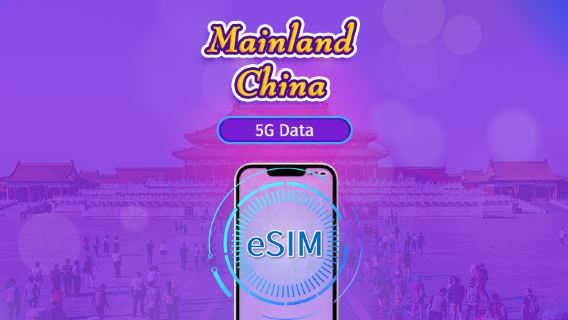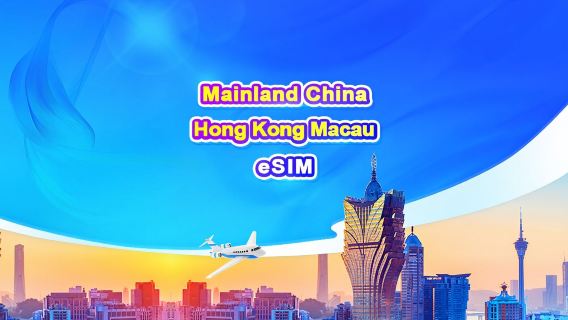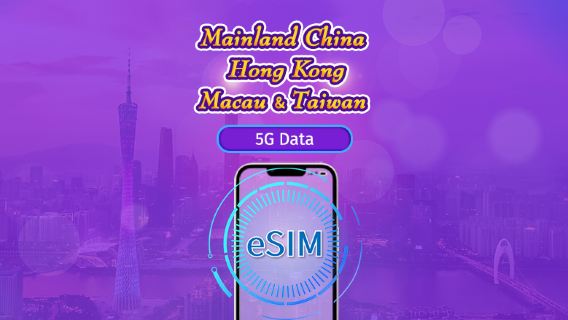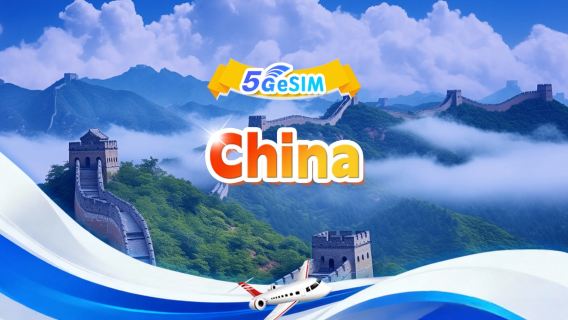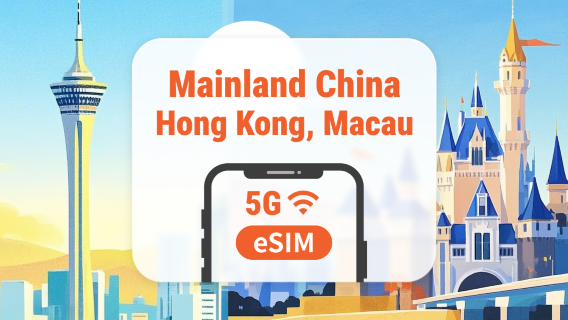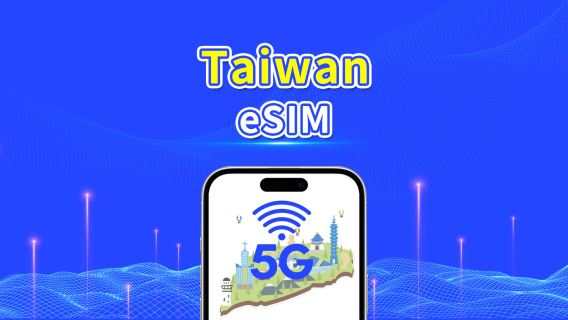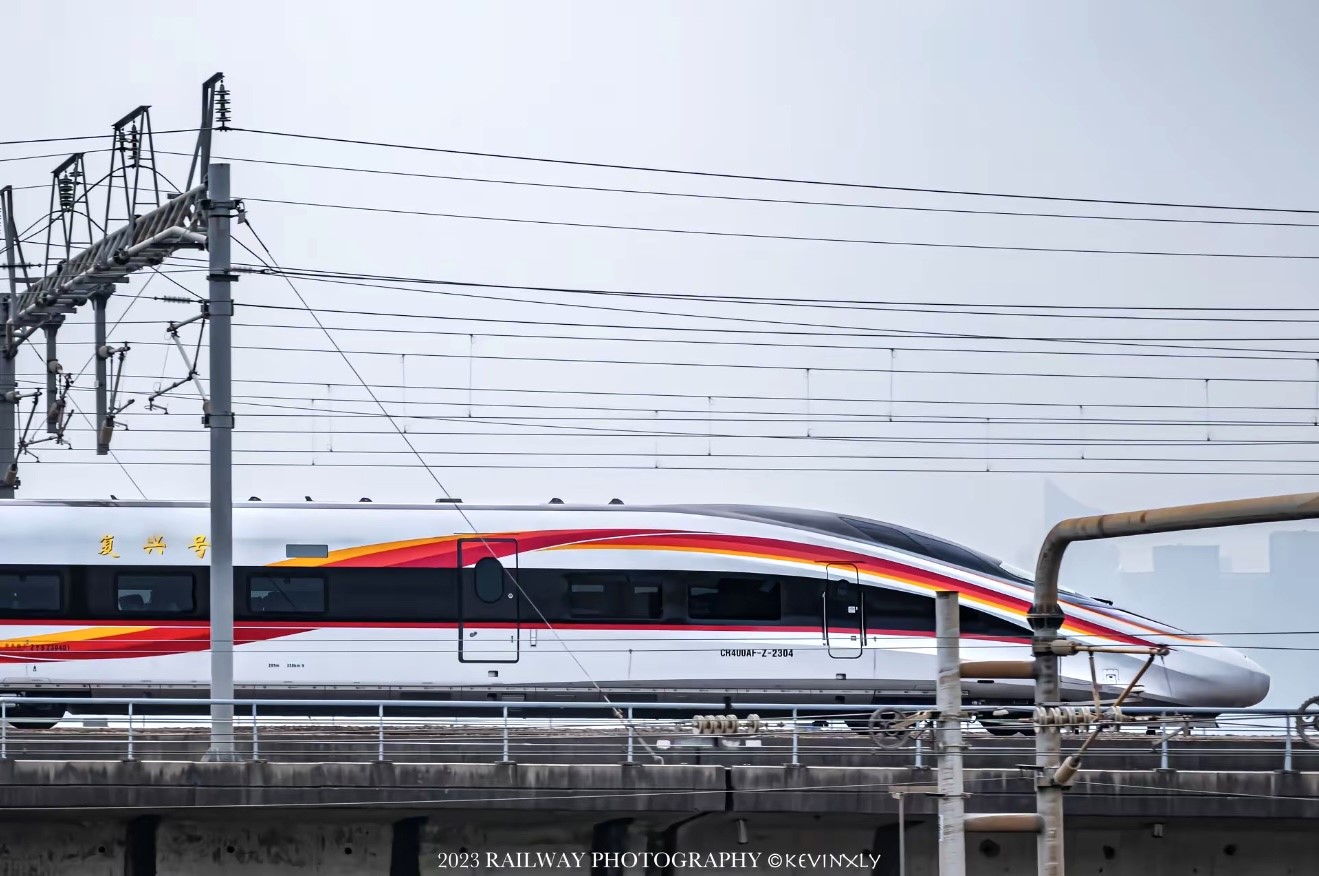
Image credit: KevinXly
Travelling around China? Opting for its modern high-speed rail (HSR) network is a smart, efficient choice. This guide breaks down essentials for first-timers, from understanding train types (G/D differences) to navigating popular routes like Shanghai-Beijing. Learn how to book tickets online via trusted platforms, decode seat classes for comfort, and grasp refund rules to avoid hassle. Whether you’re curious about speeds (up to 217 mph!) or sleeper options for overnight trips, we’ve got you covered.
Quickly Check Cheap Train Tickets in China
🏷️Find Cheap Flights, Hotels, Train Tickets, and eSIMs & SIM Card for Your China Trip
🔥 Popular High-Speed Rail Routes
| Train Route | Duration | Book Online |
|---|---|---|
| Hong Kong to Guangzhou | 47m | Book Ticket |
| Hong Kong to Shenzhen | 14m | Book Ticket |
| Guangzhou to Shenzhen | 29m | Book Ticket |
| Shanghai to Hangzhou | 39m | Book Ticket |
| Shanghai to Suzhou | 23m | Book Ticket |
| Chengdu to Chongqing | 1h 2m | Book Ticket |
| Shanghai to Nanjing | 1h 38m | Book Ticket |
| Beijing to Tianjin | 1h 2m | Book Ticket |
| Wuhan to Changsha | 1h 11m | Book Ticket |
| Train Route | Duration | Book Online |
|---|---|---|
| Beijing to Shanghai | 4h 18m | Book Ticket |
| Beijing to Xi'an | 4h 10m | Book Ticket |
| Hong Kong to Beijing | 8h 10m | Book Ticket |
| Hong Kong to Shanghai | 8h 6m | Book Ticket |
| Beijing to Guangzhou | 7h 17m | Book Ticket |
| Beijing to Chengdu | 7h 30m | Book Ticket |
| Shanghai to Chengdu | 11h 11m | Book Ticket |
| Beijing to Harbin | 4h 47m | Book Ticket |
| Beijing to Kunming | 10h 55m | Book Ticket |
- The booking platform accepts international cards.
- Fees and times may vary depending on the specific train.
What is China High-Speed Rail?
China’s high-speed rail (HSR) is the world’s largest and most advanced bullet train network, stretching over 48,000 kilometres (29,826 miles) (as of March 2025) and linking nearly all major cities. Launched in 2008, these trains operate on dedicated tracks, reaching speeds of 250–350 km/h (155–217 mph). The system is renowned for its punctuality, comfort, and eco-friendly design, making it a top choice for both locals and travellers. Stations are modern, with English signage and announcements, ensuring a stress-free experience for international visitors.
Whether you’re travelling between megacities like Beijing to Shanghai, Guangzhou to Shanghai or exploring regional hubs, HSR offers a faster, greener alternative to flights.
China Bullet Train Map

*Image by Wikipedia
How Fast is China’s High-Speed Rail?
Most high-speed trains (G/D/C codes) run between 200–350 km/h (124–217 mph), depending on the route. For example:
- Beijing to Shanghai (819 miles) takes 4.5 hours.
- Guangzhou to Shenzhen (86 miles) takes just 29 minutes.
Slower trains (Z/T/K codes) average 80–160 km/h (50–99 mph) and are better suited for budget travellers or overnight journeys.
China Train Types (Train Codes Explained)
Code | Type | Speed (mph) | Key Features |
High Speed Type | |||
G | High-Speed Rail | 186–217 | Fastest, fewest stops |
D | Electric Multiple Unit | 124–155 | Connects mid-sized cities |
C | Intercity EMU | 99–124 | Short-distance routes (e.g., Beijing–Tianjin) |
Normal Type | |||
Z | Direct Express | 75–99 | Overnight, limited stops |
T | Express Train | 75–87 | More stops than Z trains |
K | Fast Train | 62–75 | Frequent stops, budget-friendly |
Y | Temporary Tourist Train | 50–87 | Designed for tourist routes |
L | Temporary Passenger | 50–87 | Additional services during peak tourist season |
S | Suburban Railway | 62–100 | Connecting cities and suburbs (e.g., Beijing to Yanqing trains) |
– | Ordinary Train | 62-75 | Basic service, cheapest option |
Differences Between China D Train and G Train
Category | D-Class EMU (D) | High-Speed Rail (G) |
Code | D | G |
Speed | 124–155 mph | 186–217 mph |
Routes | Intercity multi-stop | Inter-province express line |
Seating Layout | First/Second Class/+Sleeper | Business/First/Second Class |
Number | More frequent services | Fewer trains |
Price | Budget-friendly | 20–30% higher |
Comfort | Basic amenities, no Wi-Fi | Spacious seats, Wi-Fi |
Key Notes:
- G trains prioritise speed and luxury, ideal for long-distance trips (e.g., Beijing–Shanghai).
- D trains suit shorter routes or budget travellers, with more stops.
- Both use modern EMU technology, but G trains have stricter safety standards for higher speeds.
High-Speed Train Seat Classes
1️⃣ Business Class
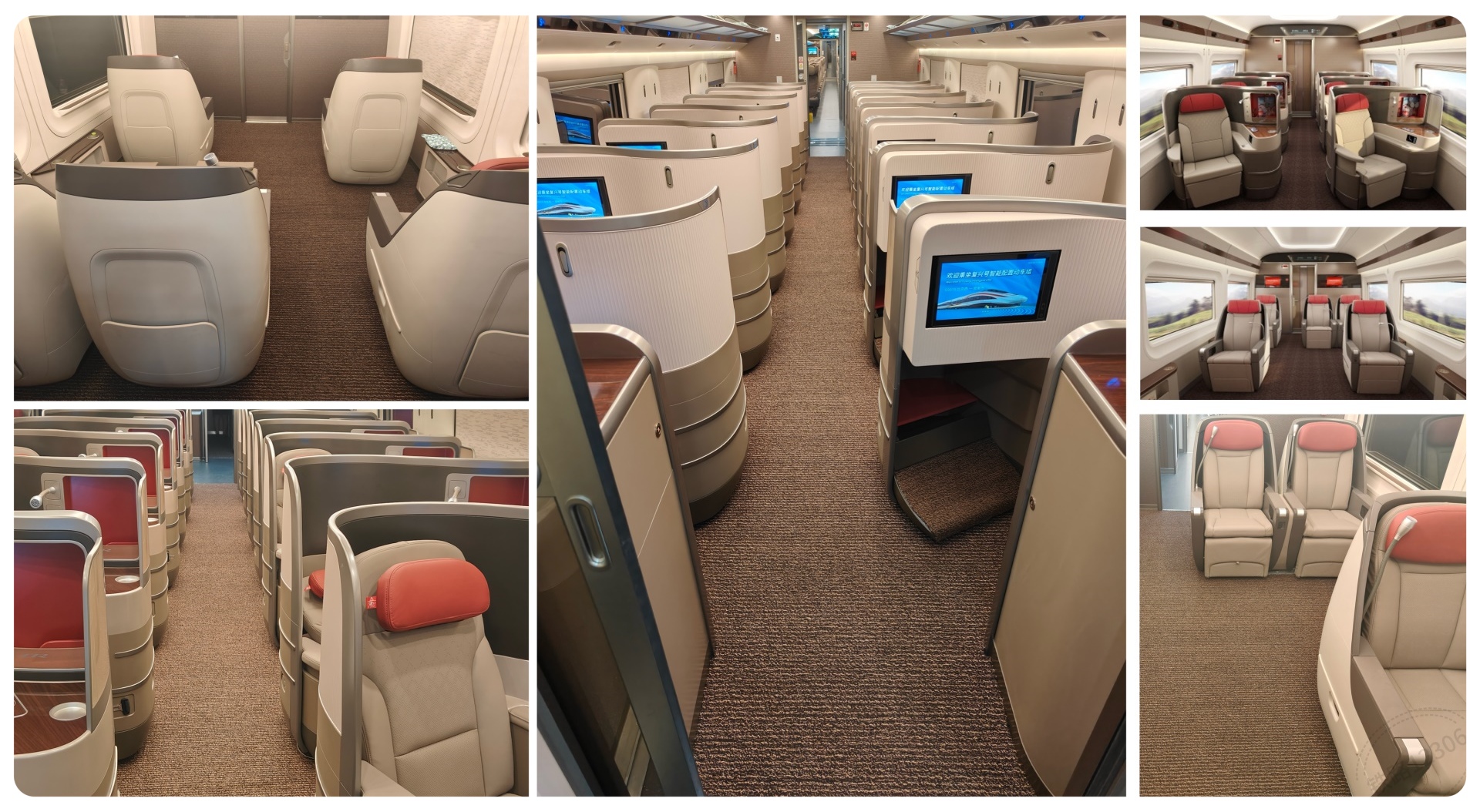
💼 Service: Personal attendant, priority boarding
🚉 Lounge: Access to station VIP lounges
🚪 Seating: 1+2 layout (single aisle)
📏 Width: Widest
🍴 Food: Free meals + drinks
2️⃣ First Class

💼 Service: On-call staff assistance
🚉 Lounge: Paid lounge access
🚪 Seating: 2+2 layout
📏 Width: Wide
🍴 Food: Meals for purchase
3️⃣ Second Class
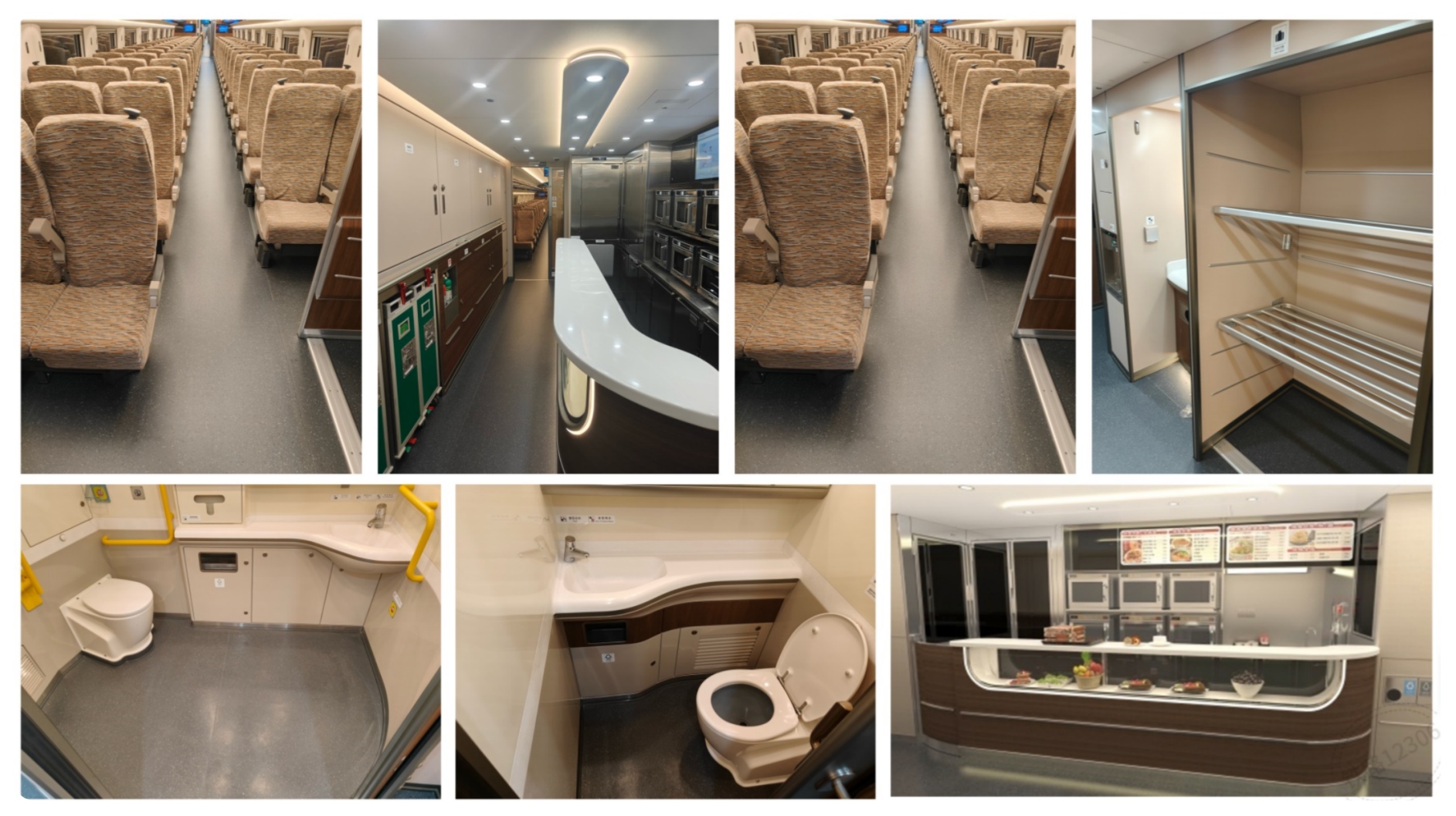
💼 Service: Self-service
🚉 Lounge: Paid lounge access
🚪 Seating: 2+3 layout
📏 Width: Standard
🍴 Food: Snacks sold onboard
4️⃣ Sleeper
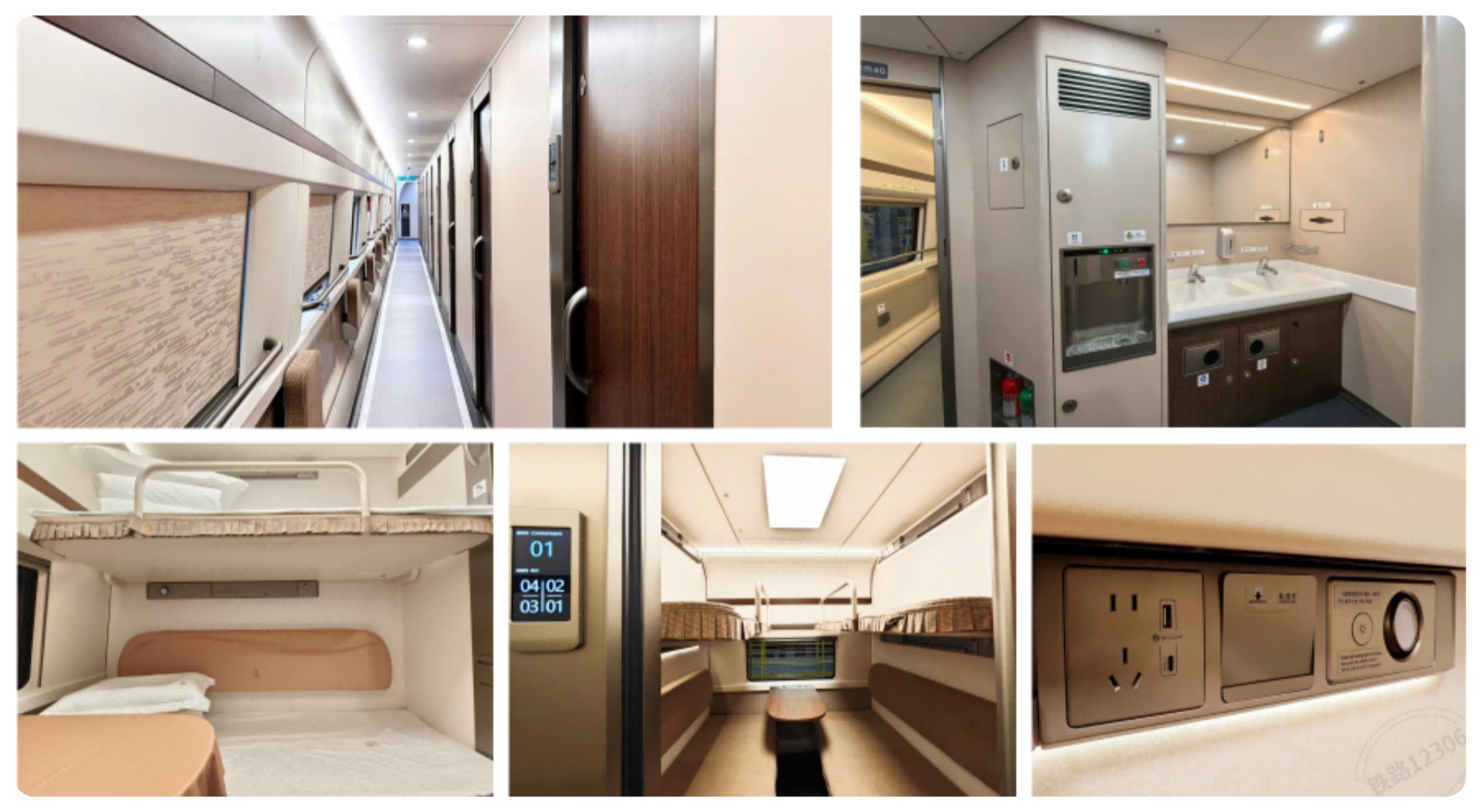
🛏️ Facilities: Bunks, curtains, charging ports
💼 Service: Basic bedding provided
🚪 Layout: 4–6 berths per cabin
📏 Space: Compact but private
🍴 Food: Pre-packed meals (paid)
🔥 Hong Kong West Kowloon to Beijing West trains
*The above seat class pictures are from Railway 12306
China High-Speed Sleeper Train
Sleeper Type | Layout | Available On |
Soft Sleeper | 4-bed cabin | Harmony/CRH trains (max 300 km/h) |
Deluxe Soft Sleeper | 2-bed cabin | Select long-distance routes |
First Class Sleeper | 4-bed cabin | Rejuvenation/CR trains (max 350 km/h) |
Second Class Sleeper | 6-bed cabin | Older overnight trains |
New Type Sleeper | Bunks along aisle (lengthwise) | Beijing–Shenzhen D902/D901 trains |
Notes:
- Deluxe Soft Sleepers offer more privacy but are less common.
- New Type Sleepers have compact, space-efficient designs.
- Image source: Railway 12306
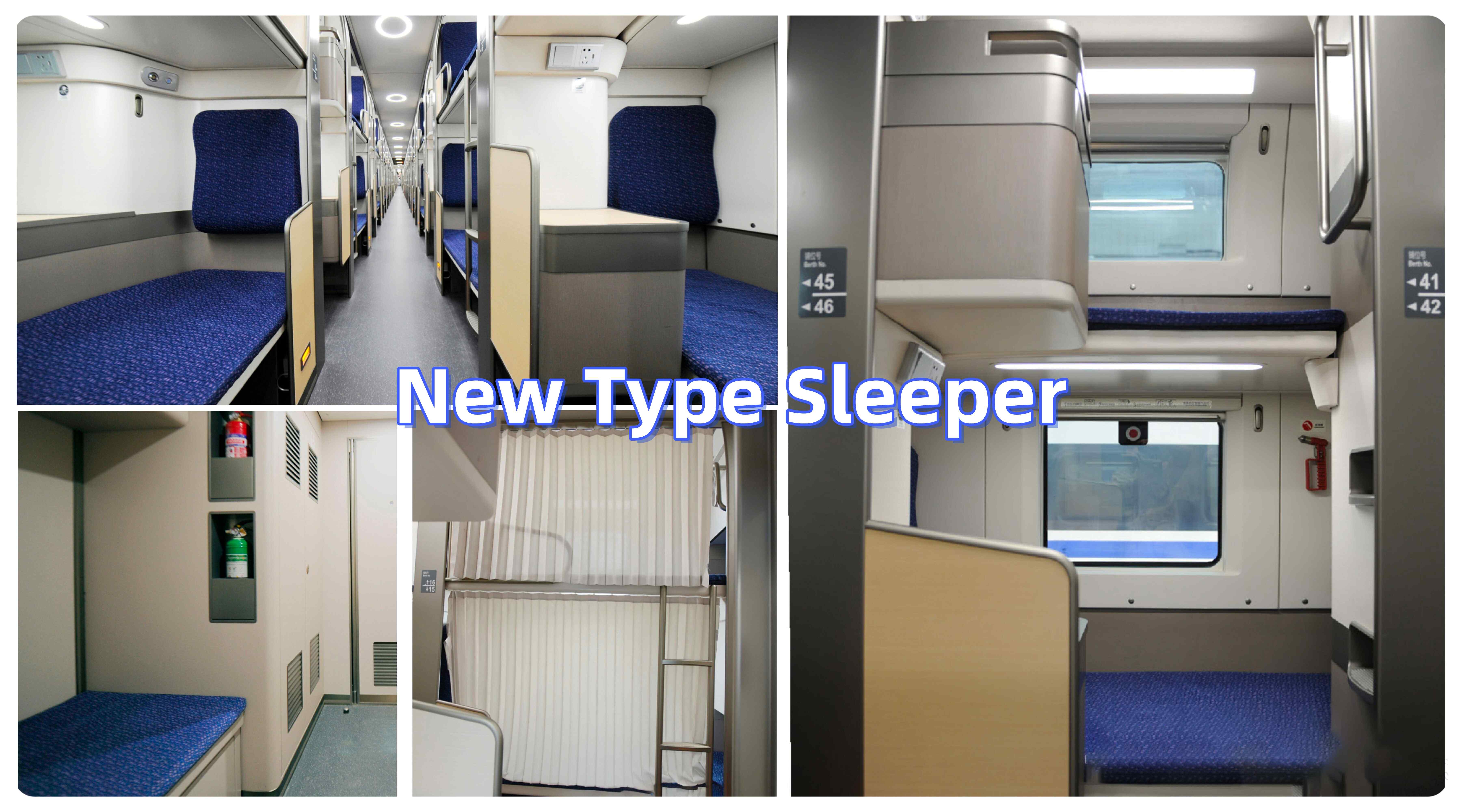
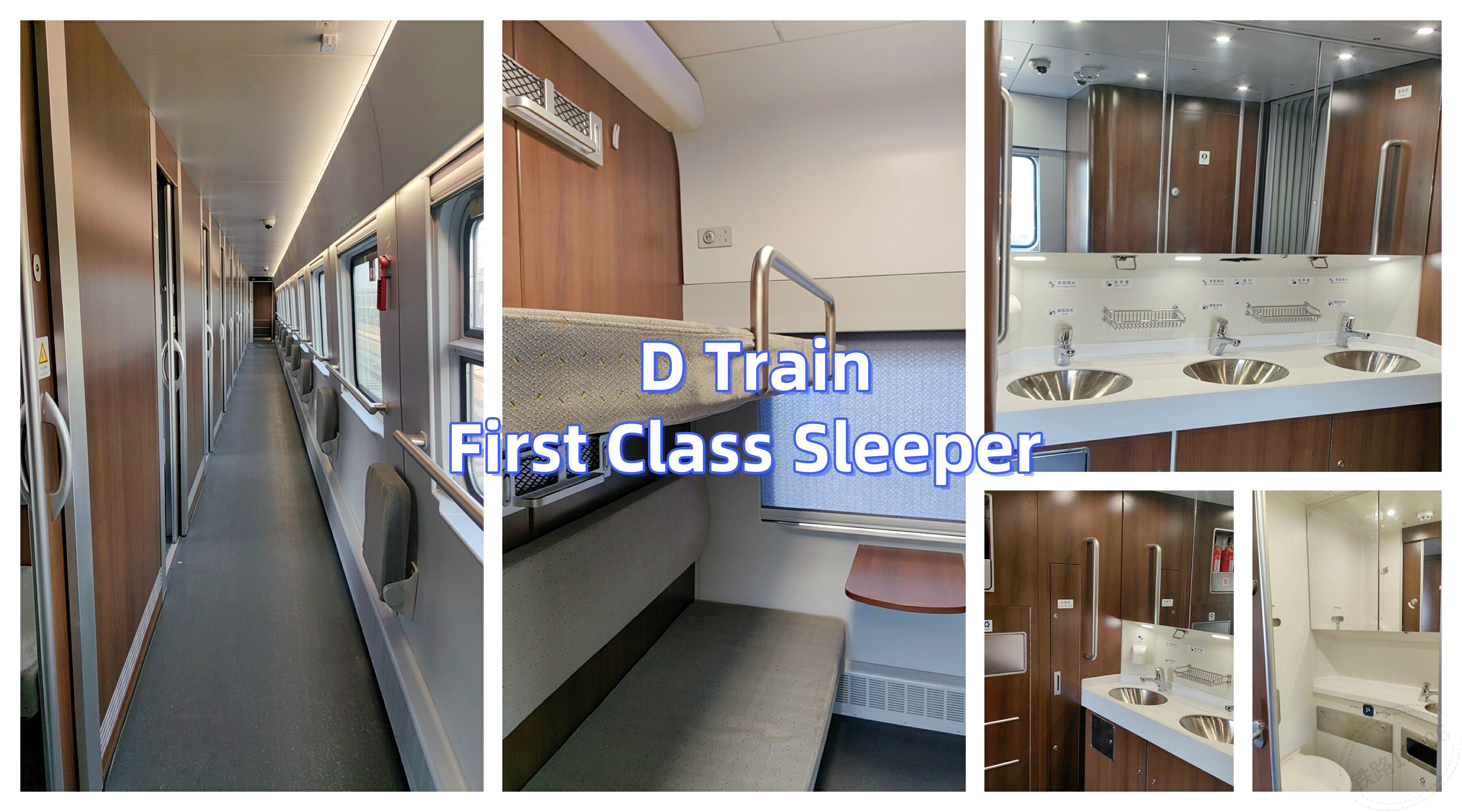
Best Platform to Book Train Tickets
| Booking Platform | Pros | Cons |
12306 English Version | ✅Official source ✅Direct access ✅Comprehensive schedules | Limited English support Occasional technical issues Need to log in for identity verification (3-5 days) |
Trip.com (International) | ✅ Multi-language/currency support ✅ Accepts Visa/Mastercard ✅ E-tickets (no paper exchange) ✅ Easy booking, refunds, & 24/7 customer support | China train lines may require a booking fee (approximately £2-5) European trains are free of booking fee |
Train Station Ticket Counter | ✅ Cash accepted ✅ No pre-registration required ✅ Immediate ticket issuance | Limited availability (peak seasons) Long queues & Language barrier No seat selection in advance |
Ctrip (Chinese Version) | ✅ No Chinese phone number needed (use others’ numbers) ✅ No 12306 account required ✅ Popular Booking Platforms in China | 25 RMB service fee Requires WeChat/Alipay/Chinese bank card Non-personal phone number may cause issues |
Ask Friends/Family (12306) | ✅ Free child tickets can be added ✅ Direct entry with Chinese ID card (if valid) ✅ No fees | Requires personal assistance (time zones/communication issues) Risk of input errors by helpers |
*Based on 2025 info. Check the latest updates before you travel.
How to Book Train Tickets Online
Booking a train ticket via Trip.com is simple:
1️⃣ Begin by logging in: Go to the Trip.com website (English-friendly), or use the search box below🔍. Enter your departure city, destination, and travel date. If your city isn’t shown, type it manually.
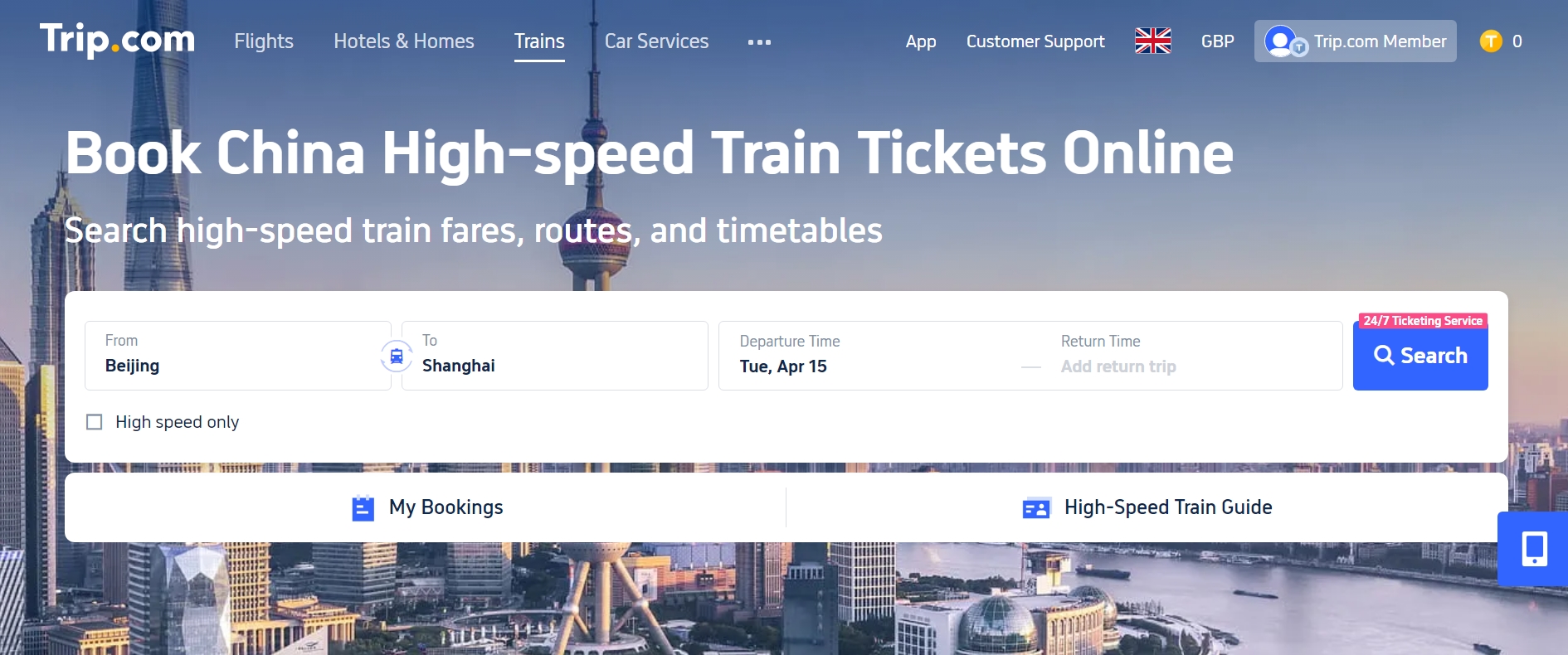
2️⃣ Pick your seat class: Select second class, first class, or business class, then click "Book".
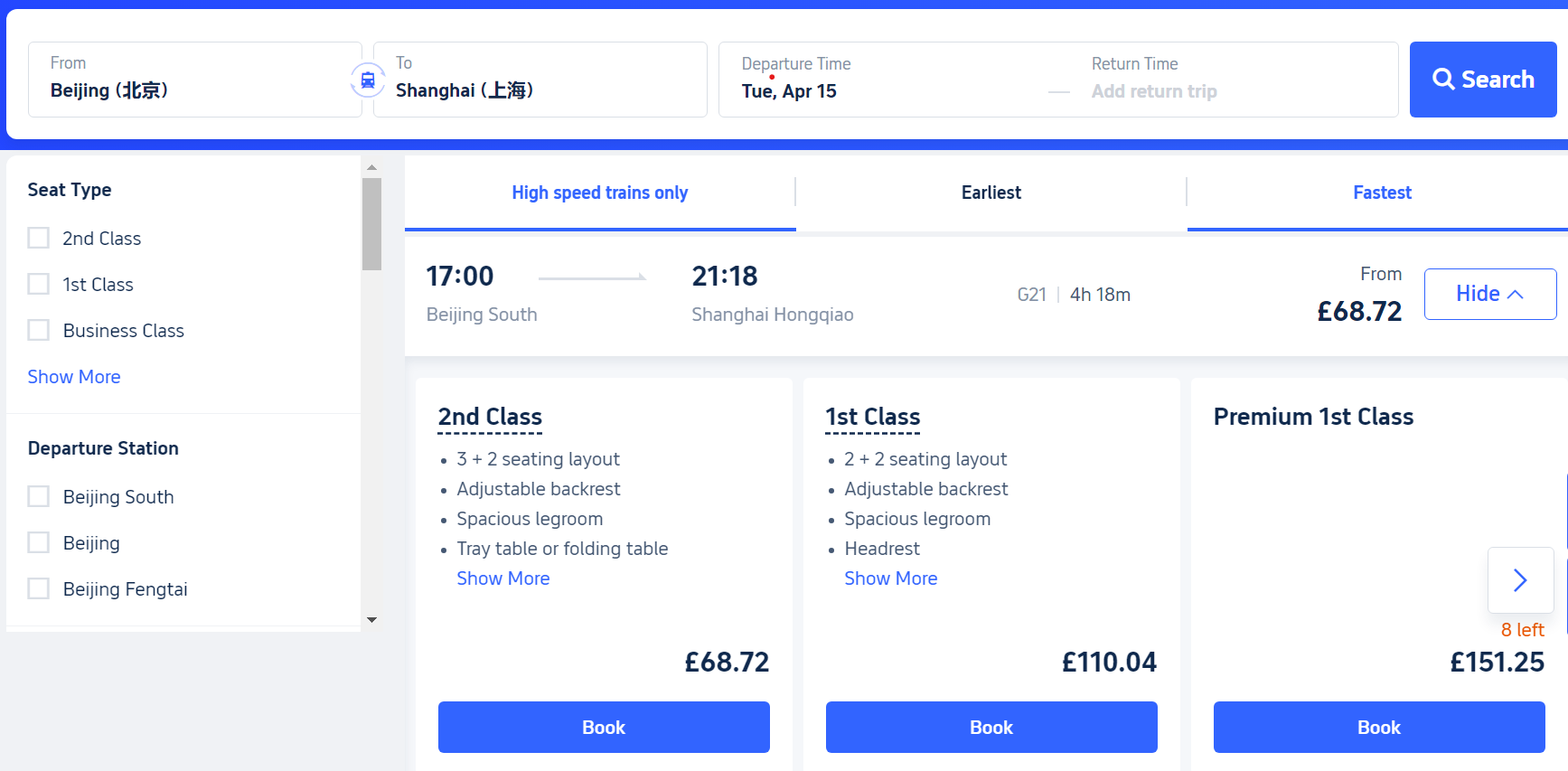
3️⃣ Add passenger details: Select the number of travellers, provide passenger information (e.g. name, date of birth) and add contact details (e.g. email, phone number).
4️⃣ Choose seat type: Pick window, aisle, or middle seats (options like A, B, C, D, F).
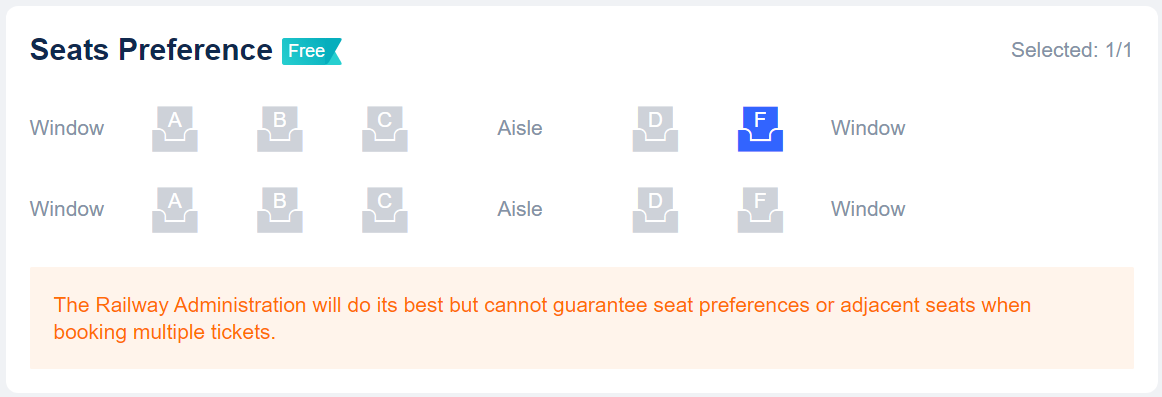
5️⃣ Pay securely: Use credit/debit cards, PayPal, WeChat Pay, or Alipay to complete your booking. (Use your card in your local currency!) ✅
How to Take High Speed Train in China
1️⃣ Buy Tickets: Get your train tickets easily on the Trip.com website or app. No need to sign-up with a Chinese phone number or ID checks needed – just add your passport number when booking.
2️⃣ Pay: Use your card in your local currency. It’s quick and hassle-free.
3️⃣ E-Tickets: Your ticket is an e-ticket, no need to queue up to buy a paper ticket.
4️⃣ Arrive Early: Reach the station 30–45 minutes before departure to find your platform calmly.
5️⃣ Enter the Station: Go to the manual channel, show your passport, and they’ll scan or type in your details. Check screens or your Trip.com Website/App ticket to confirm your platform.
6️⃣ Board: When your train is announced, join the manual check queue. On the train, match your ticket’s carriage and seat number. (Ticket check-in stops 5 minutes before departure)
🔔 Keep your passport handy – you’ll need it at every step.
China Railway 12306 Ticket Refund & Change Rules
| Time Before Departure | Refund Fee | Change Fee | Notes |
8+ days | Free | Free | Full refund allowed. |
48 hours – 8 days | 5% fee | Free | Refund based on original ticket price. |
24 – 48 hours | 10% fee | 5% fee | Changes allowed once. |
<24 hours | 20% fee | 15% fee | No free changes. |
After departure | Not allowed | 40% fee (Within 24 hours after departure) | Exceptions for delays/cancellations. |
Note:
- Latest update: 2025
- Refund fee: ¥2 minimum.
- Changes: Only 1 free change allowed (if done 48+ hours before departure).
- Seat availability: Changes depend on seat/ticket availability.
- Special cases: Full refund for delays/cancellations or travel restrictions.
- Rules may vary slightly for holiday periods or special trains.
China High-Speed Rail FAQ
1. How much does China high-speed rail cost?
Prices depend on distance and seat class. For example, Beijing to Shanghai costs £57–£180.
2. Can foreigners book train tickets in China?
Yes, using a passport on Trip.com or at station counters.
3. Do I need to book in advance?
Yes – popular routes sell out days ahead, especially during holidays.
4. Are pets allowed on high-speed trains?
Yes, there is now a special high-speed rail service for transporting pets (Beijing-Shanghai line), but it must be booked in advance.
5. When should I arrive at the station?
At least 30–45 minutes before departure for security and boarding.
6. What if I miss my train?
Modify your ticket at the station counter for a same-day departure (fee applies).
China’s high-speed rail network simplifies travel across this vast country. With this guide, you’re ready to explore efficiently and comfortably. 🚄

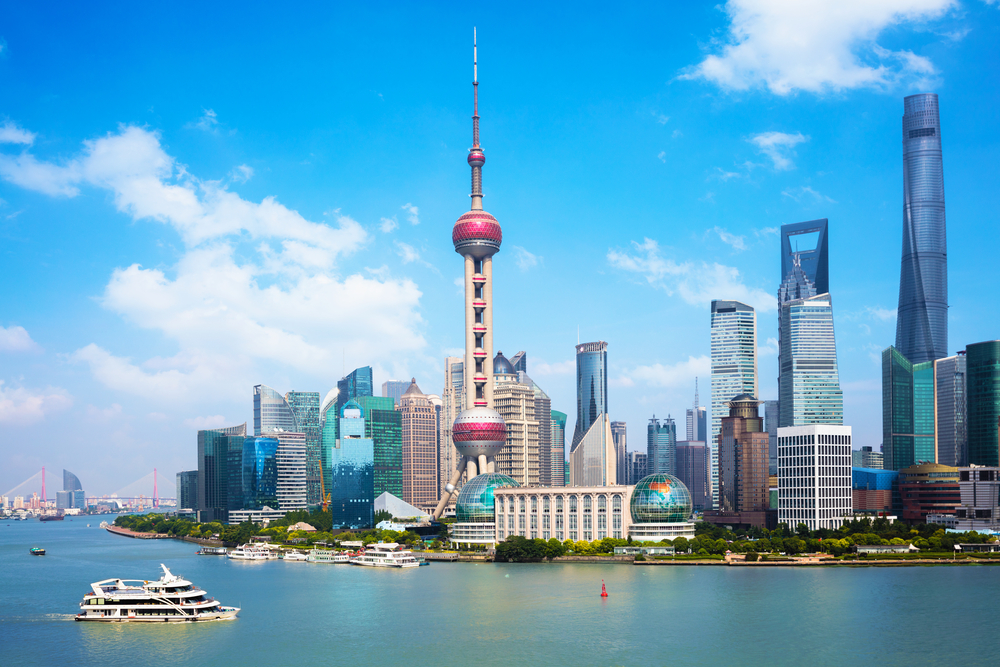

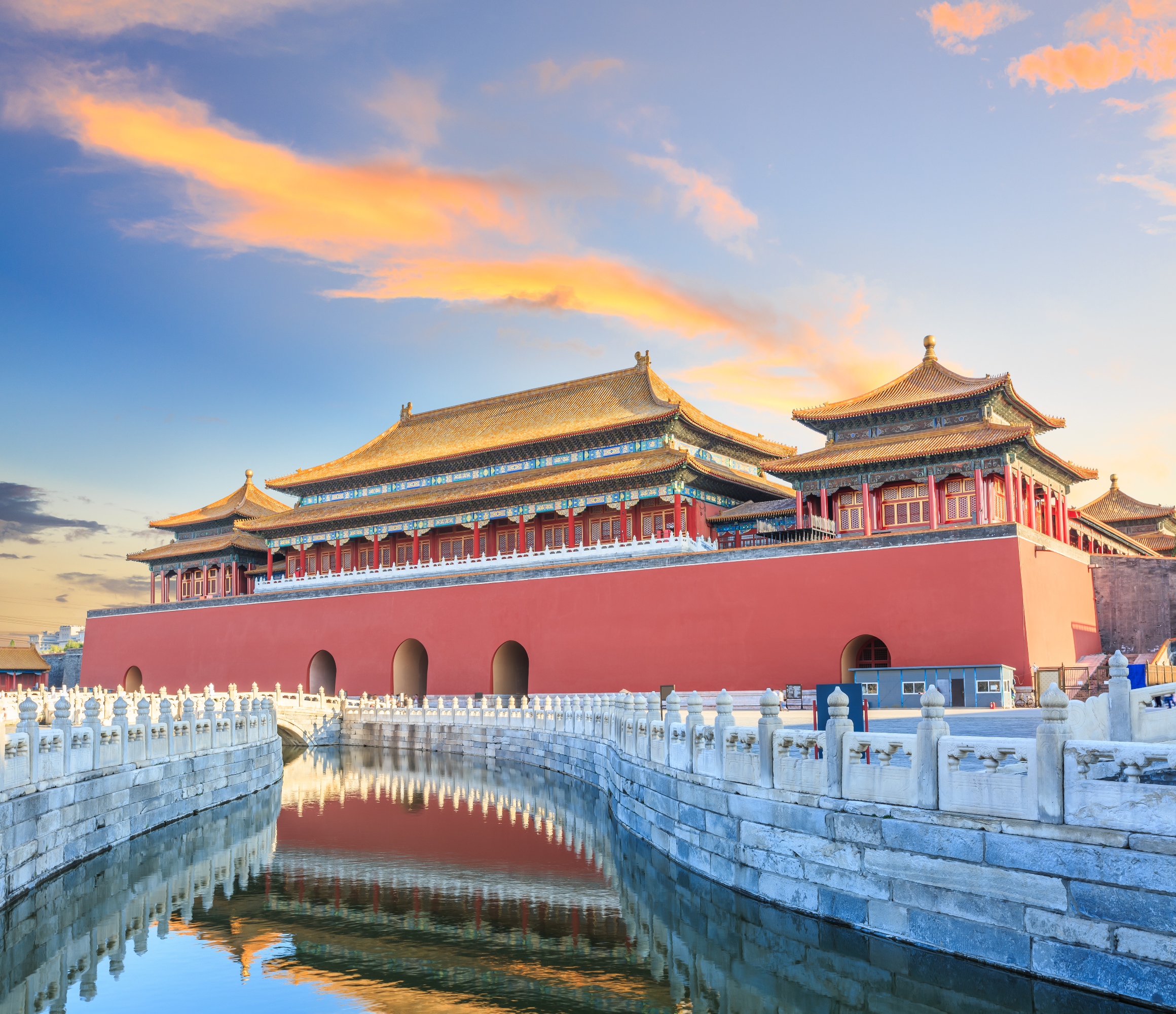

 407600 booked
407600 booked